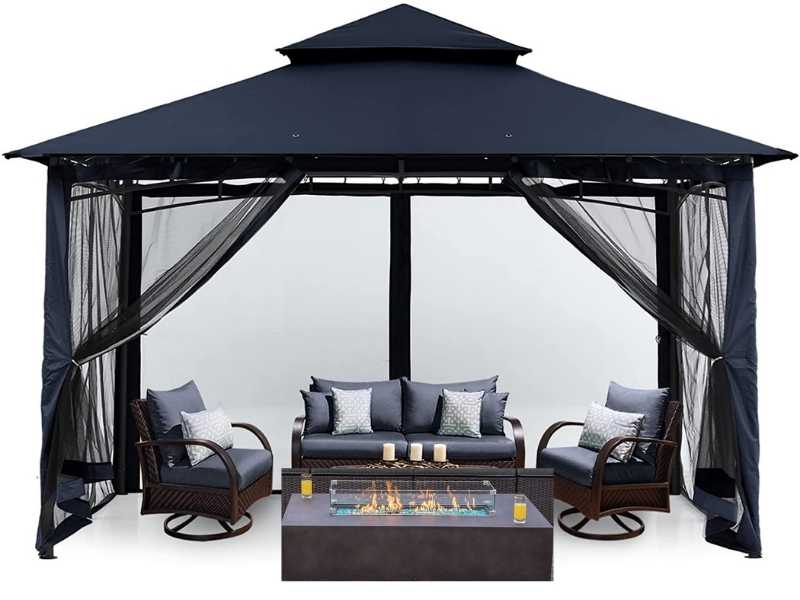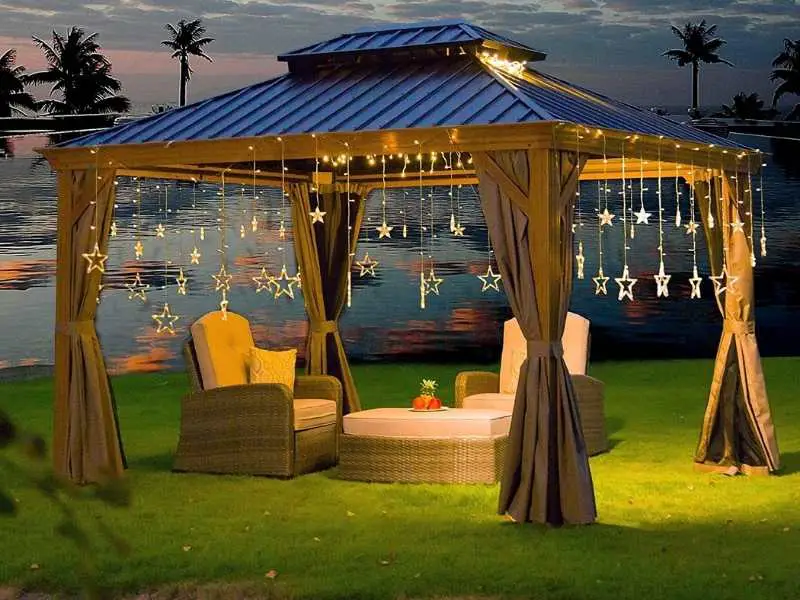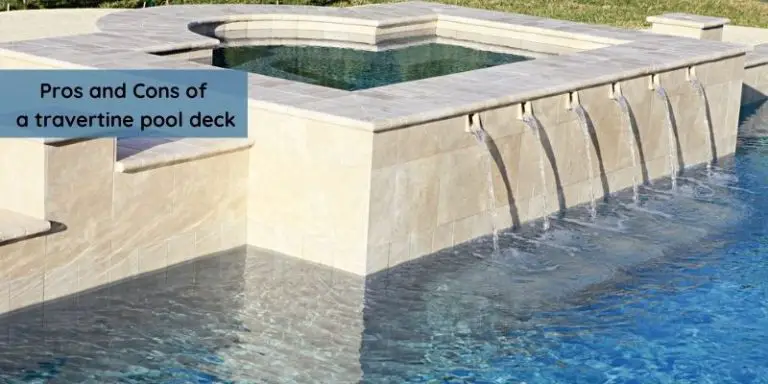Can You Put a Fire Pit Under a Gazebo?
Fire pits and gazebos both enhance outdoors living in different ways. And luckily for homeowners, you can use both of them together by setting up a fire pit underneath your gazebo. However, you’ll need to take stock of various fire safety requirements, especially in fully-enclosed gazebos with side screens.
Can you put a fire pit under a gazebo?

You can set up a fire pit under a gazebo, but you have to consider the necessary safety measures. These include ensuring the gazebo is set up the correct way and keeping any flammable items are safe distance away from the fire pit.
Check your local regulations
The first step homeowners should take when looking to install a fire pit underneath a gazebo is to factor in the local fire safety regulations. For instance, some states and counties have restrictions on fire pit sizes if they’re to be used under gazebos or pergolas.
Another common fire pit safety regulation in several states is the ‘no burn’ rule that bars homeowners from setting up outdoor fire pits during the driest and warmest summer days. If you’ve checked your local regulations and confirmed that you’re in the clear, you can proceed to legally set up your fire pit.
Ensure proper ventilation
As opposed to pergolas which have slatted roofs, gazebos have a solid roof, which traps the smoke from your fire pit. This creates the risk of carbon monoxide poisoning, more so if the gazebo is screened/enclosed on the sides as well.
To prevent smoke and toxic chemical buildup below your gazebo, invest in a gazebo roof with ventilation openings. You should also avoid using side covers/screens while the fire pit is in use.
Consider the location of the gazebo
It’s not advisable to put a fire pit too close to the house or any other building structure (such as a garage) due to the increased risk of fire damage. Thus, if your gazebo is not at least 25 feet away from the house, you should reconsider placing a fire pit below it.
Meanwhile, if there are any dry, overhanging branches close to the gazebo, cut them down as they may catch fire as well and cause it to spread.
Consider the type of fire pit
Another important thing to note before placing a fire pit under your hardtop gazebo outdoor aluminum gazebo is the type of fuel the pit uses. Generally, you need to take more caution with wood-burning fire pits. They produce immense quantities of smoke, which can stain your gazebo roof, while also posing a higher risk of carbon monoxide poisoning.
Woodfire pits also produce more heat than other types of fire features, with greater potential for heat damage and fire outbreaks. They also produce sparks that can burn and damage the gazebo floor. To prevent this, invest in a fire pit mat and a spark screen that goes over the top of the fire pit.
By contrast, propane gas and natural gas fire pits are considerably safer than wood-burning fire pits. These two types of fire feature still produce smoke, but not as much as wood fire pits. You can also control the amount of heat they produce, minimizing the chances of heat damage to the gazebo and other items within the outdoor structure.
Consider the type of flooring
If your gazebo encloses a wooden deck or patio, there’s a greater possibility of fire breakouts and floor damage. Vinyl flooring is also susceptible to swelling and cracking under exposure to excessive heat. You should, therefore, invest in a fire pit mat if you have either of these types of flooring underneath your gazebo.
By contrast, if the floor is made out of concrete or natural stone. You shouldn’t have much to worry about. You can safely put a fire pit directly on them without any risk of heat damage to the flooring.
Consider the gazebo pillars
It could be that you’ve already been using a fire pit under your open patio/deck and are just now thinking about installing a gazebo to partially enclose your outdoor space. If this is the case, it’s advisable to go for gazebo pillars made out of metal, cement, or stone. You should avoid wood and canvas pillars that are more likely to catch fire from sparks coming out of the fire pit.
Consider the gazebo furniture/accent pieces
Wooden furniture and wooden decorative items are at a greater risk of igniting when using a fire pit under a gazebo. Metallic gazebo furniture is preferable.
How much overhead clearance do you need?
One of the most important factors to take into account when setting up a gazebo with fire pit usage in mind is the overhead clearance. This is the distance between the roof of the gazebo and the top of your fire pit (not the ground). Low gazebo roofs that are below six feet high are more likely to become charred or crack due to the heat from the fire feature.

Ideally, your gazebo roof should be at least 10 feet high for maximum safety against potential heat damage. Despite the importance of this safety consideration, you also don’t want to set up your gazebo roof too high, as this downgrades the ambiance and the semi-enclosed feeling that such free-standing structures are meant to offer.
Note: States, counties, and municipalities have different requirements on how much the overhead clearance should be to safely use a fire pit under a gazebo. These spacing requirements are usually based on how dry or hot your particular region is (likeliness of fire + dryness/heat causing fire outbreaks). You should, therefore, check to see if your overhead clearance complies with the stipulations of your area.
Apart from the overhead clearance, you also need to ensure that spacing between the center-positioned fire pit and the perimeter of the gazebo is safe. If you’re going to use a wood-burning fire pit, make sure the edge of the gazebo is at least eight feet away from the position of the pit.
Meanwhile, for propane and natural gas fire pits, the radius of the gazebo should be at least five feet. Finally, any furniture within the gazebo should be moved towards the edge of the structure to ensure a safe distance from the fire. They should be at least three feet away from the fire feature, and five feet away when using a wood-burning fire pit.
What type of fire pit can you use in a gazebo?
You can use any type of fire pit underneath your gazebo, provided you factor in all the necessary safety measures. However, propane fire pits are the most preferable in such outdoor spaces, as they’re more controllable in terms of the amount of heat they produce.
Note: Even though propane fire pits are the safest, it may still be illegal to use them under gazebos that are too close to the house or other flammable structures/items. Most state and county fire safety regulations have banned the use of propane fire pits in gazebos that are less than 10 feet away from the house.
Woodfire pits aren’t recommended for use in gazebos, as they generate the highest amount of heat. They also emit sparks and embers that can easily cause a fire outbreak and damage the gazebo floor surface.
Safety tips and requirements
There are additional safety tips that you need to factor in when using a fire pit below a gazebo. These include:
- Placing a fire extinguisher close to the gazebo– despite your best efforts and consideration of fire safety measures, fire pits may still catch fire when used under the gazebo. Keeping a fire extinguisher close by may prevent extensive damage in such instances.
- Rolling back gazebo curtains/screens– if you’ve installed gazebo screens that enclose the sides, make sure you retract them whenever the gazebo is in use, as they can easily catch fire.


